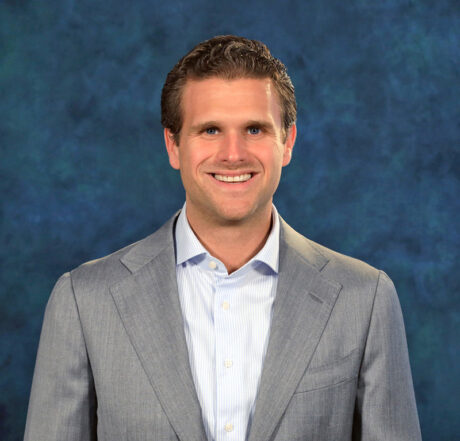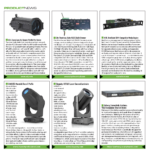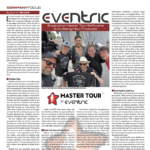
In February, NAMM named John Mlynczak as its new President/CEO—only its fourth since 1946. Mlynczak, who holds degrees in music education, music performance, and education leadership, has a strong technology background. He started the first music technology course in Louisiana and wrote the state curriculum for an official approved course. He was previously the Vice President of Music Education & Technology at Hal Leonard, where he collaborated on music education technology related initiatives. Prior to that, Mlynczak held the role of Managing Director of Noteflight, was a past President of the Technology Institute of Music Educators, and Director of Education for PreSonus Audio. PLSN spoke with him about his view of NAMM and the entertainment technology segment.
What do you see as NAMM’s mission today?
NAMM’s mission is to strengthen the music product industry and promote the pleasures and benefits of music making. That isn’t changing, but how we execute continues to evolve.
What’s your long-term view of entertainment technology?
It’s where innovation happens. Technology is leading the way in all facets of music-making, and if we want to grow, that’s where it is going to happen. Look at the concert arena: the advancements in sound and lighting are getting more people to the shows and giving them a better experience.
Relative to NAMM’s long history, the inclusion of the live event/concert touring aspect is relatively new—The Parnelli Awards’ first gala there was in 2018. What are your thoughts about this segment?
Bringing those communities into NAMM is essential. The reason live sound and lighting are part of us is because NAMM is the largest global gathering of the music product industry. NAMM has long outgrown just connecting manufacturers with retailers. [Previous President/CEO] Joe [Lamond] knew that, when he pursued bringing your segment into the fold. We know we need multiple segments: performers, manufacturers, distributors, teachers, and users. And where do all these segments come together? The stage.
What can we expect at this next NAMM show?
We will deliver the core of what people expect: An amazing gathering, an opportunity to connect with people, a chance to put your hands on gear, experience music making across the campus, and network. You’ll be able to walk away with more opportunities on Sunday than you had on Thursday. At the same time, we’re looking at delivering a show where our members see that we’re listening and evolving, setting the stage for future growth. We are looking at bringing in more artists and having a better understanding of all who come to NAMM. We are looking at what we can do better using technology and apps to better identify who is at the show, and how we can create and build on powerful opportunities for them. We are back to a four-day show, and four nights of award shows—the Parnelli Awards being a key component.
The live event segment is different from “traditional” NAMM attendees—what are you going to do to attract live event professionals?
We understand that the manufacturers of the big audio consoles, the line arrays, the latest moving lights, etc., don’t want to see 100 retailers at their booth. They want those top-level FOH mixers, lighting designers, and production professionals to put their hands on what they have and get their latest products on those riders. We now know how to find those people. We can attract them and connect them with manufacturers.
Getting that award-winning lighting designer and FOH engineer to the show might be challenging. How will you attract them?
We’re about to announce a major change: Previously, only companies could be NAMM members; but now individual professionals, including live event professionals, are eligible to join NAMM and take advantage of all its benefits, including the trade show. So instead of borrowing someone else’s credential, we want you to come to the NAMM show as a valued member of our organization. So, any individual working with music-related products in any way are now welcome, and that includes private educators, too. Related, we are working on our member benefits to best serve that segment, and then through strategic initiatives gather data to create a valuable experience.
Let’s discuss the educational and training opportunities at the show.
You will not be surprised to hear me say that I believe education drives innovation and growth. So, this aspect will only get bigger and better. We just had a meeting on how we’re going to expand training opportunities, and that includes on audio and lighting consoles. People want that training, and we’re going to figure out how to get it to them. We’ve previously strived to be product-neutral in our sessions. We’ve been avoiding a session on a specific piece of gear, but at some point, we need to move beyond that. People want the training on specific consoles, and we’re going to figure out a way to do it.
Will there be any changes with seminars and panel discussions going forward?
Right now, we’re evaluating it all—Zach [Phillips, Director of Professional Development] does such a good job every year on this. The traditional session tracks you have seen year-to-year exist because our audience wants them each year, but we always survey and re-evaluate to ensure we are delivering what the industry wants. AI is a hot topic. We know it’s top of mind. But rather than just an AI track, we’re looking at how to weave it throughout our programming. It’s a piece of technology, not a fad, and so we’ll include it in sessions organically in the context of the purpose the session serves.
A universal problem is the labor shortage. What are you looking to do for that?
This falls under what I said about our mission—not changing, but the execution is evolving. We will be promoting a music-making workforce and its development across the board. This Fall we’re kicking off the first of many steps to take workforce development to a broader scale. We need to make sure high school and college students understand how many opportunities, how many great careers, exist in this industry. This month we will be at the American School Counselor Association’s annual conference. We are putting together a brochure to make sure people know that music careers are available, and provide the data on salary, skills, etc. We will work to make sure counselors realize the lucrative, high demand, high tech, exciting opportunities with music that aren’t just performing or teaching. How many times do you hear someone in this business say that they didn’t know such-and-such job existed?
NAMM will work to make sure the perception of every career in this business is exciting. It’s a huge piece of the future of NAMM. We will work to better connect college students to companies, career panels, and job fairs. Beyond this next show, we will try to provide education about these careers.
Another universal issue is diversity. How are you addressing diversity?
It’s top of my mind, and why we’re growing our Women of NAMM organization and have our NAMM Young Professionals leading the way in diversity, and we’re absolutely focused on it. We all must work harder to ensure that women and people of color have opportunities.
But this goes back to our general emphasis on workforce development: we need to gain a wider audience in the career possibilities we offer and enhance our diversity. Yes, it’s difficult, but that’s not going to slow us down. We have to reach the next generation of people, and that includes all people.
What will NAMM look like in five years?
NAMM will be a thriving global membership association that represents everyone who makes, sells, teaches, and works with musical products. It’ll continue to host the largest global gathering that strategically makes the industry stronger. Members will have a robust organization where they will receive value 365 days a year.
Any final comment to live event professionals?
We value your contribution so much we created a membership category for you. We want you as a NAMM member and we will make it valuable for you to be one. Otherwise, I’ll see you in January.
For more information on NAMM, visit www.namm.org


